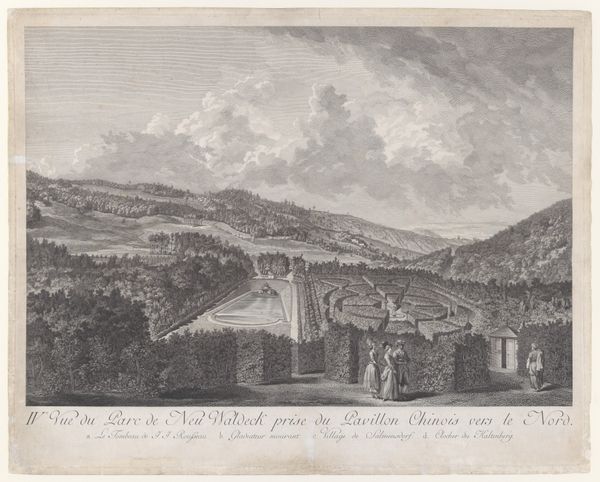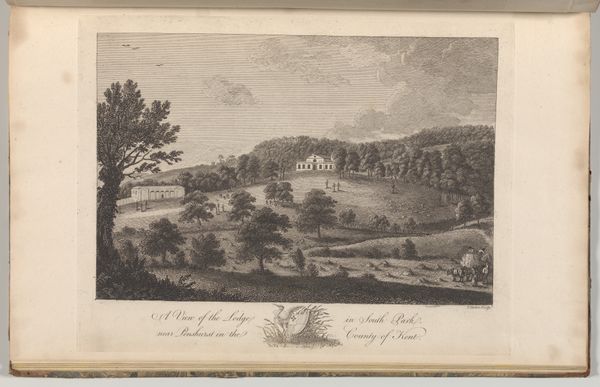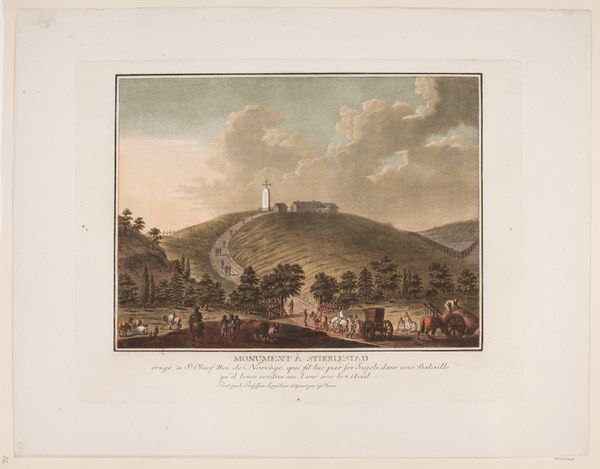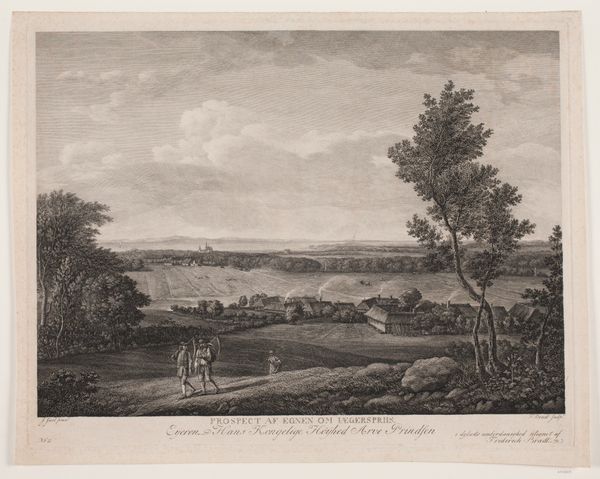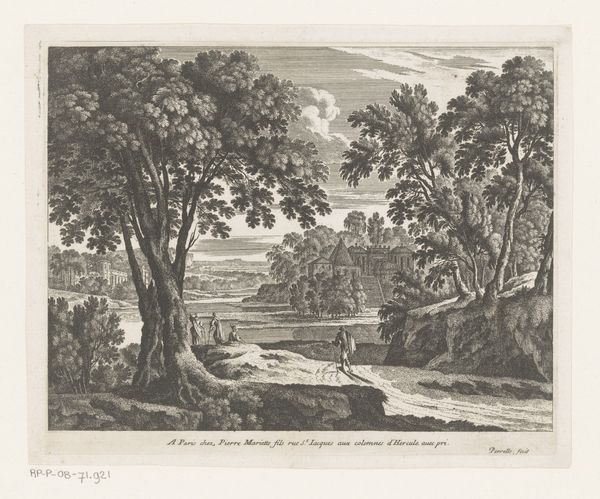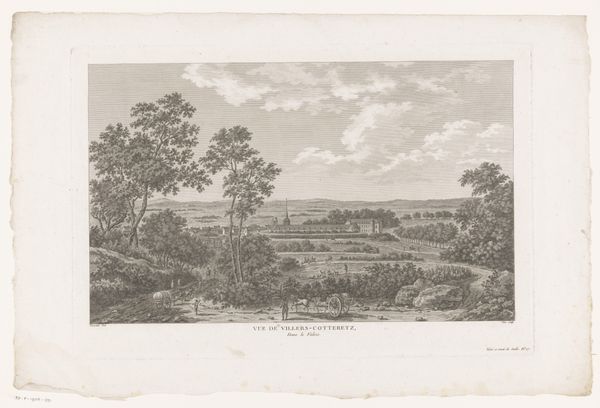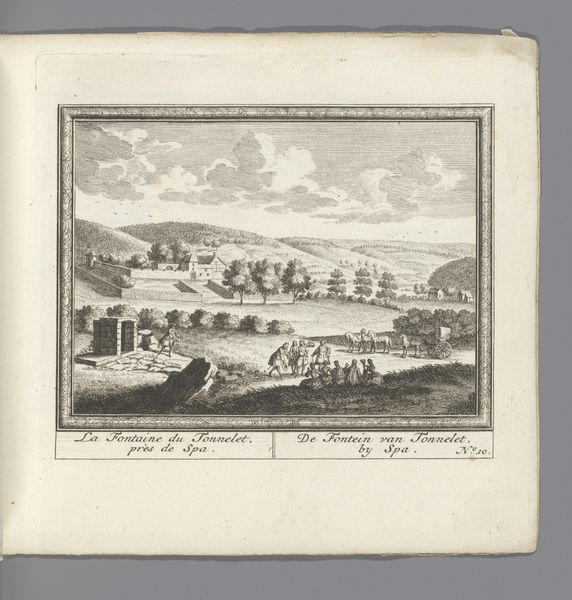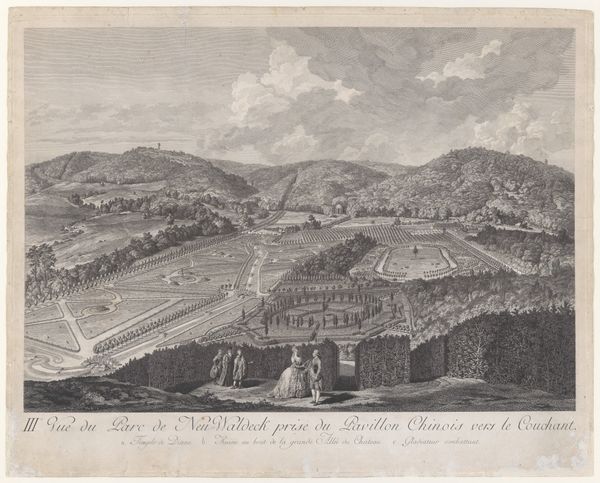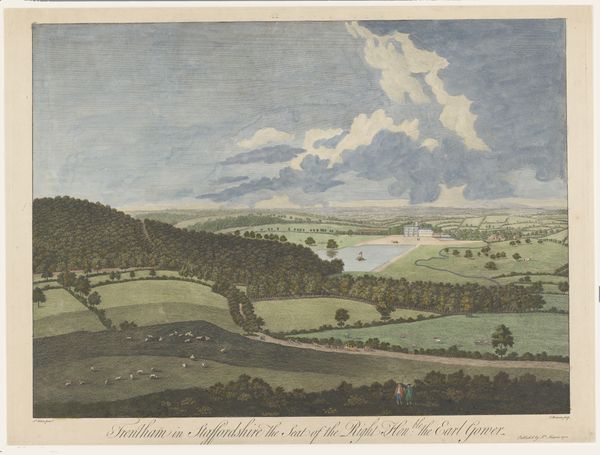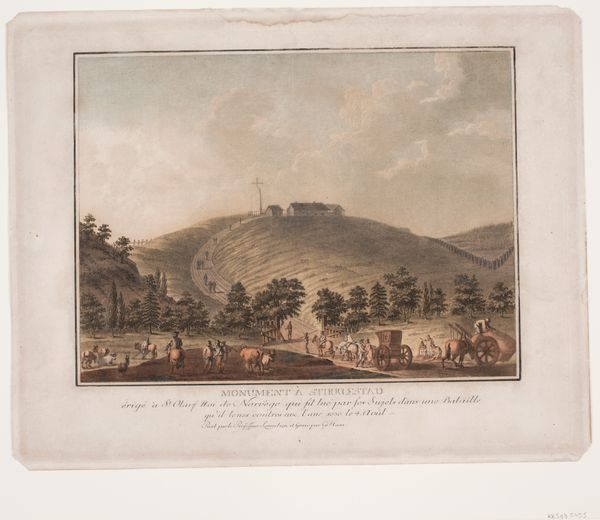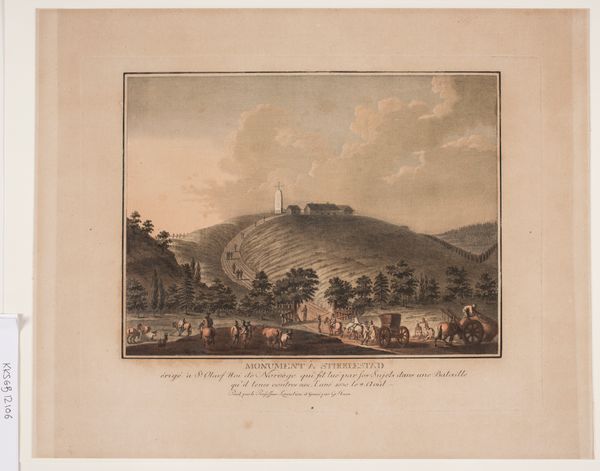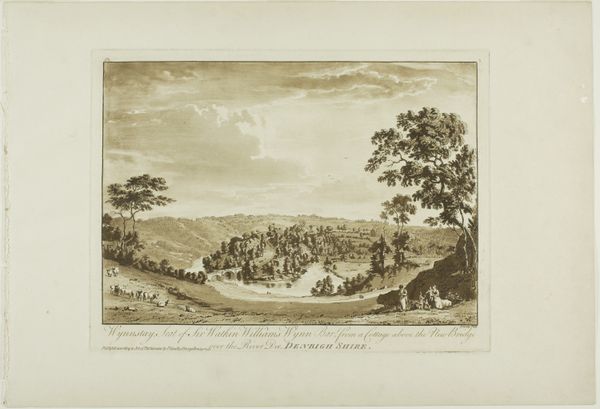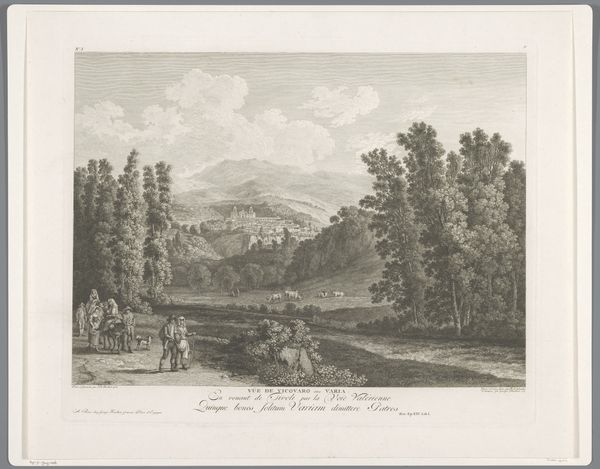
IIde Vue du Parc de Neu-Waldeck prise du Pavillon Chinois vers le Midi, from Views of the Park and Gardens of Marshal Count de Lacy at Neu-waldegg 1782
0:00
0:00
drawing, print, engraving
#
tree
#
drawing
#
neoclacissism
# print
#
landscape
#
men
#
park
#
history-painting
#
engraving
Dimensions: sheet: 20 1/2 x 25 7/8 in. (52.1 x 65.7 cm) sheet: 19 5/16 x 25 11/16 in. (49.1 x 65.2 cm)
Copyright: Public Domain
Curator: Welcome. We're standing before Jakob Matthias Schmutzer's "View of the Park of Neu-Waldeck from the Chinese Pavilion, looking South," created in 1782. It’s an engraving, offering a glimpse into landscape design and aristocratic life in the late 18th century. Editor: My initial reaction? It's incredibly...contained. Everything feels so ordered, manicured. The symmetry almost suffocates the scene. I mean, even the clouds look politely arranged. Does anyone really live like this? Curator: This idealized depiction reflects the prevailing aesthetic of Neoclassicism. The print showcased the wealth and cultivated taste of Marshal Count de Lacy, who owned the Neu-Waldegg estate. Notice how the figures in the foreground appear to be admiring the very vista that we are observing in the engraving itself. It underscores the constructed nature of the landscape. Editor: It feels like a stage set for the elite. I’m curious about the “Chinese Pavilion” mentioned in the title. Was that a literal pagoda somewhere? Seems an odd thing for Neoclassicism. Curator: The Chinese Pavilion represents the vogue for Chinoiserie, which was quite popular at the time among European aristocracy. These exotic touches signified global awareness, refined tastes, and, naturally, access to international trade. Editor: I suppose it's not that different from collecting souvenirs, really, just…on a grander, architectural scale. But back to the landscape itself, even those dark areas are controlled! Curator: Absolutely. Even the so-called wilderness here is framed and shaped to project a certain image of power and enlightened control. It’s less about natural beauty, perhaps, and more about imposing a particular order onto nature. It illustrates the values of its owner and the epoch in which it was commissioned. Editor: Looking closer at those figures, I get the sense that they're performers, playing roles within this composed scene. Their poses, the neatness… are they genuinely at ease or merely presenting themselves to be viewed? Curator: Precisely. The people populate, give scale to, and authenticate the view—but are not to be seen as anything beyond a piece of the picturesque. Editor: I see this image as an artifact, like a preserved moment of performance more than a captured natural landscape. Well, thank you for setting the scene! It has been eye-opening, I am grateful for being offered your understanding. Curator: My pleasure. It’s through viewing such works with inquisitive eyes that we may glean a better grasp of history.
Comments
No comments
Be the first to comment and join the conversation on the ultimate creative platform.
